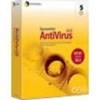Symantec 11281411 Administration Guide - Page 128
Displaying and customizing a warning message on an, infected computer, Table 3-4, Variable
 |
UPC - 037648327237
View all Symantec 11281411 manuals
Add to My Manuals
Save this manual to your list of manuals |
Page 128 highlights
128 Scanning for viruses and other threats Configuring scan options Displaying and customizing a warning message on an infected computer When you run a remote scan on a user's computer, you can immediately notify the user of a problem by displaying a warning message on the infected computer's screen. You can customize the warning message by including information such as the name of the threat, the name of the infected file, the status of the infection, and so on. The default warning message contains message variables and text. The message variable is in brackets. Everything outside the brackets is text. You can change the text and message variables that are in the warning message to suit your needs. Table 3-4 describes the message variables. Table 3-4 Warning message variables Variable Text [LoggedBy] [Event] [VirusName] [PathAndFilename] [Location] [Computer] [User] [ActionTaken] [DateFound] [Status] Type of scan that logged the event: Auto-Protect, scheduled, or manual scan. Type of event, such as Threat Found. Name of detected threat. Full path and file name. Drive location on the infected computer. Name of the computer. Network logon name of the user. Action that was taken on the infected file (such as cleaned, moved to the Quarantine, deleted, or left alone). Date and time that the threat was found. State of the file: Infected, Not Infected, or Deleted. This message variable is not used by default. If you want to display this information, you must manually add the variable to the warning message. For example, a warning message might look as follows: Scan type: Scheduled Scan Event: Threat Found VirusName: Stoned-C File: C:\Autoexec.bat Location: C:















